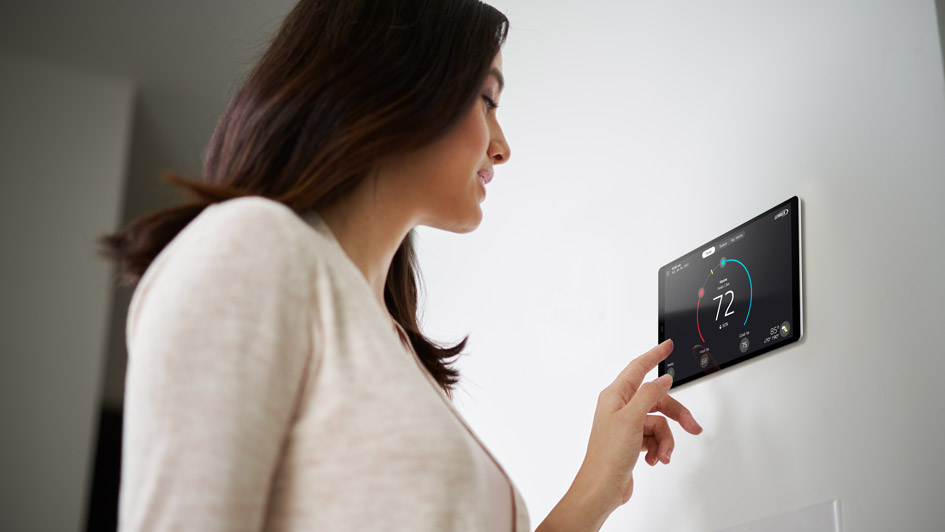
When the weather begins to cool off, you are probably concerned about how you’ll prepare your heating and cooling. After all, HVAC expenses frequently contribute a big chunk of your monthly electric bill. To try and find ways to reduce costs, some people look closely at their thermostat. Maybe there’s a setting they can use to increase efficiency?
The majority of thermostats come with a ‘Fan’ or ‘Fan On’ setting. But if the fan is on during a normal cycle, what does the fan setting offer for your HVAC system? This guide should help. We’ll review just what the fan setting is and when you can use it to reduce costs during the summer or winter.
My Thermostat Has a Fan Setting?
For most thermostats, the fan setting signifies that the HVAC blower fan keeps running. A few furnaces can operate at a low level in this setting, but for the most part heating or cooling isn’t being made. The ‘Auto’ setting, in contrast, will turn on the fan through a heating or cooling cycle and switch it off once the cycle is finished.
There are pros and cons to switching on the fan setting on your thermostat, and what's ideal {will|can|should]] depend on your unique comfort requirements.
Advantages to using the Fan/On setting:
- You can keep the temperature in each room more consistent by allowing the fan to keep circulating air.
- Indoor air quality can increase as continuous airflow will keep forcing airborne contaminants into the air filter.
- A smaller amount of start-stop cycles for the blower fan helps expand its life span. Because the air handler is usually a component of the furnace, this means you might prevent the need for furnace repair.
Disadvantages to switching to the Fan/On setting:
- A constant fan can increase your energy bills slightly.
- Constant airflow may clog your air filter in a shorter amount of time, increasing the frequency you’ll need to replace it.
{Choosing Between|Should My Thermostat Be on|Which Setting for My Thermostat? Fan or Auto in Summer/Winter
During the summer, warm air can persist in unfinished spaces such as the attic or an attached garage. If you leave the fan on, your HVAC system might gradually move this warm air into the rest of your home, forcing the HVAC system to work harder to keep up with the preferred temperature. In extreme heat, this may result in needing AC repair more often as wear and tear grows.
The reverse can take place over the winter. Cooler spaces such as a basement will hold onto cooler air, which will eventually flow into the rest of your home. Keeping the fan on could draw more cold air upward, increasing the amount of heating you need to remain warm.
If you’re still trying to determine if you should try the fan/on setting, remember that every home and family’s comfort needs are different. Leaving the HVAC system’s fan on could be best for you if:
Someone in your household has allergies. Allergies and similar respiratory conditions can be stressful on the family. Leaving the fan on should help to enhance indoor air quality, helping your family breathe easier.
Your home experiences hot and cold spots. Lots of homes wrestle with stubborn hot and cold spots that quickly shift to a temperature different from the rest of the house. The fan setting can help lessen these changes by steadily refreshing each room’s airflow.
